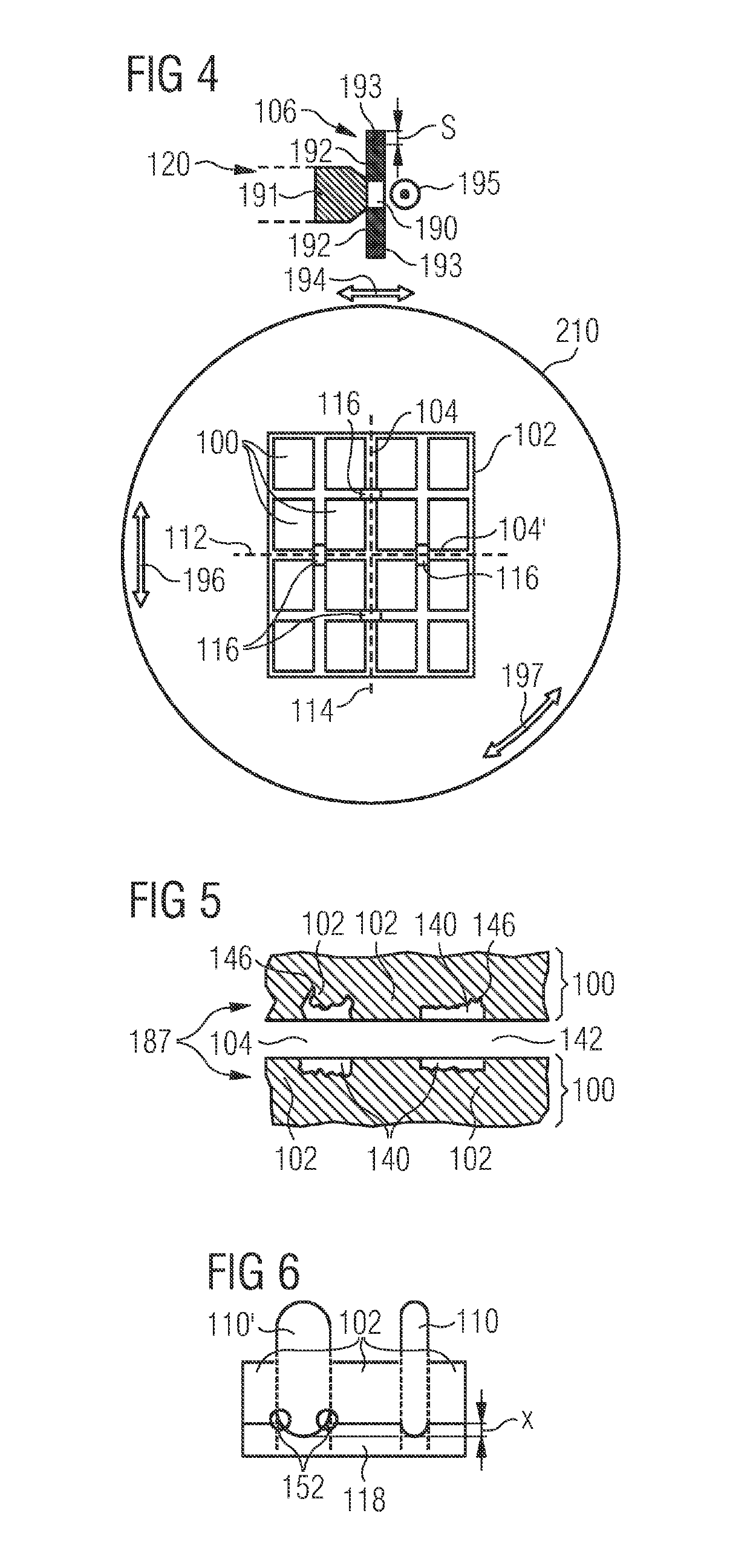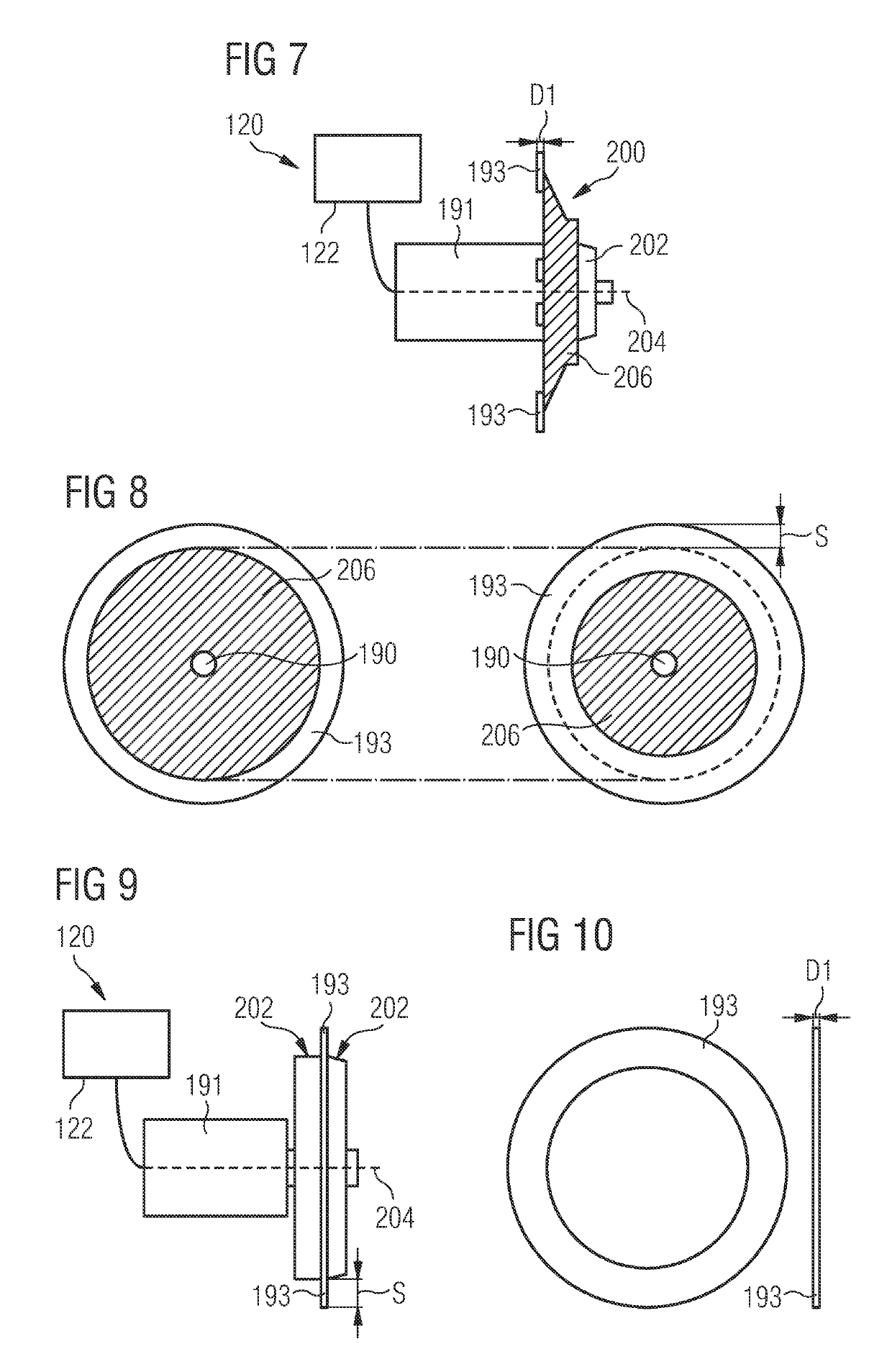Separation of workpiece with three material removal stages
a technology of separation and removal stages, applied in the direction of fine working devices, electrical equipment, and testing/measurement of semiconductor/solid-state devices, can solve the problems of reducing the reliability of the manufactured die, cracks on the front side, etc., and achieve the effect of suppressing the separation artefacts
- Summary
- Abstract
- Description
- Claims
- Application Information
AI Technical Summary
Benefits of technology
Problems solved by technology
Method used
Image
Examples
Embodiment Construction
[0010]In the following, further exemplary embodiments of the apparatus and the methods will be explained.
[0011]In the context of the present application, the term “workpiece” may denote one single integrally formed body. One example for an integral workpiece is a semiconductor wafer before singularization in its electronic dies. Another example for an integral workpiece is a semiconductor wafer which is already partially singularized into its individual separate electronic dies, wherein however the electronic dies are integrally held together by a common carrier (in particular having an adhesive surface) on which the electronic dies are fixedly mounted. Such a carrier may for instance be a carrier tape or a carrier plate (for example made of glass or silicon) on which the individual electronic dies may be fixedly attached.
[0012]In the context of the present application, the term “wafer” may particularly denote a flat slice of semiconductor material, such as a crystalline silicon, us...
PUM
 Login to View More
Login to View More Abstract
Description
Claims
Application Information
 Login to View More
Login to View More - R&D
- Intellectual Property
- Life Sciences
- Materials
- Tech Scout
- Unparalleled Data Quality
- Higher Quality Content
- 60% Fewer Hallucinations
Browse by: Latest US Patents, China's latest patents, Technical Efficacy Thesaurus, Application Domain, Technology Topic, Popular Technical Reports.
© 2025 PatSnap. All rights reserved.Legal|Privacy policy|Modern Slavery Act Transparency Statement|Sitemap|About US| Contact US: help@patsnap.com



